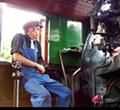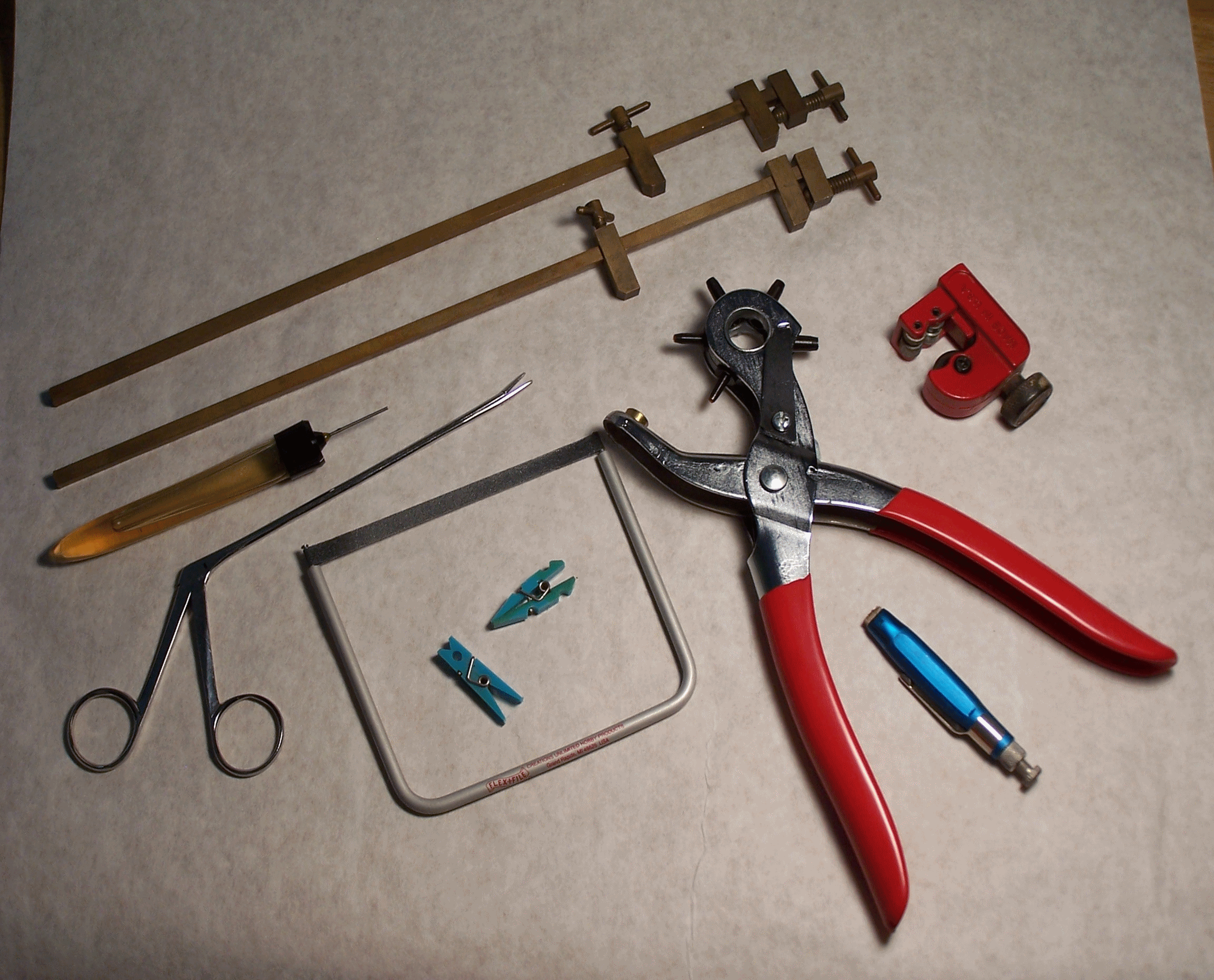The Fireman's Seat
By Robert Bell, Division 15, Assistant Superintendent



Modeling is a real joy when one has the tools to do the job at hand. I like tools; they are extensions of my hands and make some modeling jobs easier. One cannot build even a simple “shake-the-box” kit without certain tools, and I will not talk about those; we all know what we need for those kits. I will mention some of the tools that I have found that are useful, not necessarily required, but useful. Some were very cheap; some of these are what I consider pricey. Several get used on almost every project; a couple of them get used only rarely. But, I like them all and want to share some of them with you.
First up is the set of 12-inch brass bar clamps that I received these as a gift some years ago. These work just like the 4-foot versions I use in woodworking. They are helpful when I am assembling a freight car or a structure. They do not get used that often, but when I need them.....you get the idea.
 Next is my oil applicator. Originally this held an ink or paint used on electronic printed circuit boards for
marking either bad components or anti-tamper marking screw heads. I cleaned the handle/reservoir and needle
applicator out, filled it with oil and, viola! I know most good hobby oils come with the needle part, but this
has a cap (not in the photo) that covers the entire needle. This tool gets a lot of use.
Next is my oil applicator. Originally this held an ink or paint used on electronic printed circuit boards for
marking either bad components or anti-tamper marking screw heads. I cleaned the handle/reservoir and needle
applicator out, filled it with oil and, viola! I know most good hobby oils come with the needle part, but this
has a cap (not in the photo) that covers the entire needle. This tool gets a lot of use.
The “ear polypus” came from Micro-Mark, about $10 as I recall. This does not get used much at all, but it is neat. Actually, it is useful for threading wires through tight places and retrieving small parts through windows and such. The jaws are serrated, so the griping power is much better than that of the average pair of tweezers. Also, since the jaws open only at the tip, it will fit through smaller holes than tweezers.
The bow sander is great for finish-sanding curved surfaces, such as a locomotive boiler or a tank car where one is changing or eliminating details. It came with several “micro-fine” grades of sanding strips. This gives a much better finish than rubbing with sandpaper on your finger.
The two plastic clothespins are about an inch long, and a good handful of these were given to me. You will note that the one on the right has the jaws reversed. This allows use in tight places. These are great for clamping or holding all sorts of stuff. Be careful with plastic cement around these or you might glue these to you work.....ask me how I know.
The hole-punch came from a home improvement center and does what its name implies: it punches holes in plastic and thin metal. The head rotates for different sizes of holes. Again not terribly expensive, but doesn’t see a “whole” lot of use, either.
The tubing cutter is great if you do any work with brass or plastic tubing up to about 3/8’s of an inch in diameter. It makes very nice straight cuts faster and easier than a razor saw. This is a real time saver; since there is very little clean up needed around the cut.
Last, we have a fiberglass brush from the electronics industry. It cleans metal for soldering, distresses wood, removes paint from small areas, and adds wood-grain to plastic. I find this is a very useful tool to have at the workbench. Micro-Mark carries similar products. Be warned though, as this tool is used, tiny pieces of the fiberglass break off. You do not want to inhale this dust. So use this tool, and all tools for that matter, responsibly and safely.
Tool, tools, tools. Can we ever have enough? That is like asking if we can ever have enough trains. Never! I am always looking for more. They make my modeling time more efficient and enjoyable, and I’m sure yours as well.
In the July Fireman’s Seat, I’ll briefly review the new Blackstone On3 D & RG K-27 locomotive with the Soundtraxx Tsunami DCC sound. Even if you aren’t a narrow gauger, you will want to “hear” about the latest from Soundtraxx. Until then, remember: It’s your club - get involved! Let’s play trains!